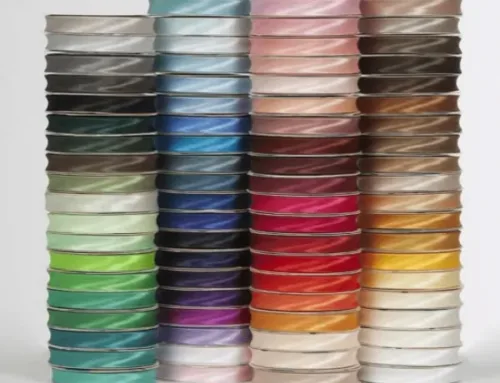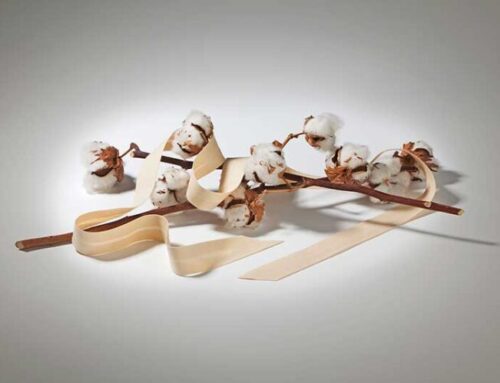Types of sewing for bias that we can provide you
To achieve a quality finish, regardless of the type of bias sewing used, it is essential to have top quality bias tapes. At Byetsa, we have been specializing in bias tape manufacturing for over fifty years, and we know perfectly well what characteristics a bias tape must have to be of good quality.
We have two basic product lines: Fany and Byor, to meet the existing needs in the market across various sectors such as home, fashion, consumer goods, packaging, and industry.
We have a catalog of over 7000 references, ranging from classic designs to the most current ones. And not only that, but we also offer our customers the possibility of manufacturing fully customized bias tapes.
It is no coincidence that our tapes meet the quality standards of ISO regulations for all types of bias sewing: Byetsa’s commitment to quality is unquestionable.

Types of bias sewing: what are they and how are they classified?
Before delving into the various categories of specific bias sewing, it is essential to understand the nature and function of these stitches. First, let’s define it: a seam is the result of joining two or more pieces of fabric, leather, or different materials through consecutive stitches.
These unions are essential in the world of design and garment making, and the versatility of Byetsa bias tapes is such that it caters to the demands of an impressive variety of sectors and industries.
A quality seam should not only be aesthetically pleasing but also functional and durable. In this regard, it is crucial to adhere to international standards, particularly ISO 4916:1991 regulations.
While in earlier times before this regulation, seams were categorized in a more basic way – such as flat, overlapped, stitched, and edge-finished – modern classification has evolved and become more comprehensive. Now, we find eight main types of bias sewing, which we will analyze in detail below.
Top stitching seams
Top stitching seams are a classic method in the world of garment making, where two or more pieces of material are overlapped before being joined. This technique involves sewing close to the edge, often using one or multiple rows of stitches, depending on the design need and desired durability.
This type of stitching is highly appreciated for the neat and clean finish it provides, and it is especially popular in delicate garments like lingerie. Furthermore, it is a common choice for T-shirts and other garments seeking a subtle and tidy finish without any bumps or rough edges in the seams. The choice of thread and sewing technique can vary depending on the material and the specific application of the garment.
Lapped seams
In lapped seams, two or more materials are overlapped and joined together with one or more rows of stitches. Within this type of seam, there are several options:


Bonded seams
Bonded seams are a refined technique that involves folding a binding strip over the edge of the material pieces to be joined. This technique not only provides a strong bond but also an aesthetic finish.
Once the binding strip is properly folded, both edges of it are stitched to the material using one or more rows of sewing, ensuring a perfect and uniform seal.
The result is a clean and neat edge that, due to its beauty and precision, can be left exposed without fear of it detracting from the garment. This type of stitching is especially appreciated in details like shirt necklines, where presentation and finish are paramount.
Flat seams
Flat seams are a special sewing technique where two fabric edges are aligned and joined through meticulously placed stitches. Instead of overlapping the edges as in other techniques, they are butted together, meaning they are placed side by side in a straight line and then stitched.
This technique is essential in garments where minimizing volume or thickness is crucial, such as in underwear or corsetry. By using flat seams, a smooth and flat junction is achieved, allowing the fabric to sit properly, avoiding discomfort or unwanted bulges, and providing the garment with a professional and comfortable finish for the wearer.


Decorative sewing
Decorative or ornamental sewing represents a distinct category of bias sewing, serving not only as a functional means of joining but also as an added aesthetic element.
In these sewing techniques, the edges are embellished and protected through overcast stitches, providing an elegant and intricate finish. Their primary purpose is to provide refined edge finishes and they are often the preferred choice for creating polished hems or those “invisible” hems that are essential in garments where seams should not be visible, such as in fly fronts or inner linings.
These seams not only ensure the durability of the garment but also enhance its appearance, making it a piece of both aesthetic and functional design.
Edging seams
Edging seams are a particularly delicate and detailed technique that involves a series of meticulous stitches executed along a predefined line or following an intricate ornamental pattern on a fold of the fabric. This approach allows the design to stand out, imparting distinctive texture and aesthetics to the garment.
What makes this type of seam particularly unique is the need for elastic bias tape, as it provides the required flexibility for the stitches to conform without distorting the material.
Thanks to the inherent elasticity of bias tape, edging seams can embrace curves and contours, achieving a finish that combines beauty with functionality in garment making. It’s a technique that highlights both the skill of the seamstress and the versatile properties of the bias tape used.
Joining separate elements
The technique of joining separate elements is a specialty within the sewing world that focuses on the precise connection of pieces that are initially separate. To achieve this union effectively and ensure its durability and flexibility, it is essential to incorporate additional components on the edges of the pieces to be joined.
One of the most common examples of these components is elastic tapes, which not only facilitate the joining but also provide adaptability to the material, allowing it to stretch and retract without compromising the seam’s structure.
This technique is ideal for garments or items that require a certain degree of mobility or flexibility in their joints, ensuring that the finish is both functional and aesthetically pleasing. It’s a method that combines skill, precision, and the use of high-quality materials to achieve optimal results.
Simple construction
Simple construction is a sewing technique that, despite its name, requires precision and care. In it, a single piece of fabric is folded or manipulated in such a way that it creates two well-defined edges.
This method is particularly useful in creating elements such as loops, which require a clean and durable finish despite their simplicity. It is one of the fundamental techniques in sewing, as it serves as the basis for many other types of more complex constructions.
While it may seem simple, achieving a professional and durable finish requires the correct choice of fabric and meticulous execution, ensuring that the piece retains its shape and function over time. It is undoubtedly a testament to how the basics can be essential in the world of design and garment making.
Articles that might interest you:
What does the quality of bias seam types depend on?
The quality of bias stitching is not an aspect that should be taken lightly, as it is crucial to ensure the durability, aesthetics and functionality of a manufactured piece. Several factors play a vital role in determining this quality, the most relevant being:
Additionally, although these three elements are essential, it is also vital to consider the type of thread used, the sewing technique used and the quality of the bias binding itself. All these variables, when managed properly, contribute to the production of high-quality and durable garments and textile products.
Contact Byetsa to get high quality bias bindings
Byetsa is committed to offering solutions and answers to all your concerns. If you are interested in discovering the wide range of services and products we have at your disposal, or simply want more details on how we can help you with your projects, we invite you to contact our team of experts.
You can write to us directly at [email protected] or, if you prefer a more direct conversation, call us at 93 874 40 98.We are here to serve you. You can also take a few seconds to fill out the contact form that you will find by clicking the button below and you will hear from us in no time.











